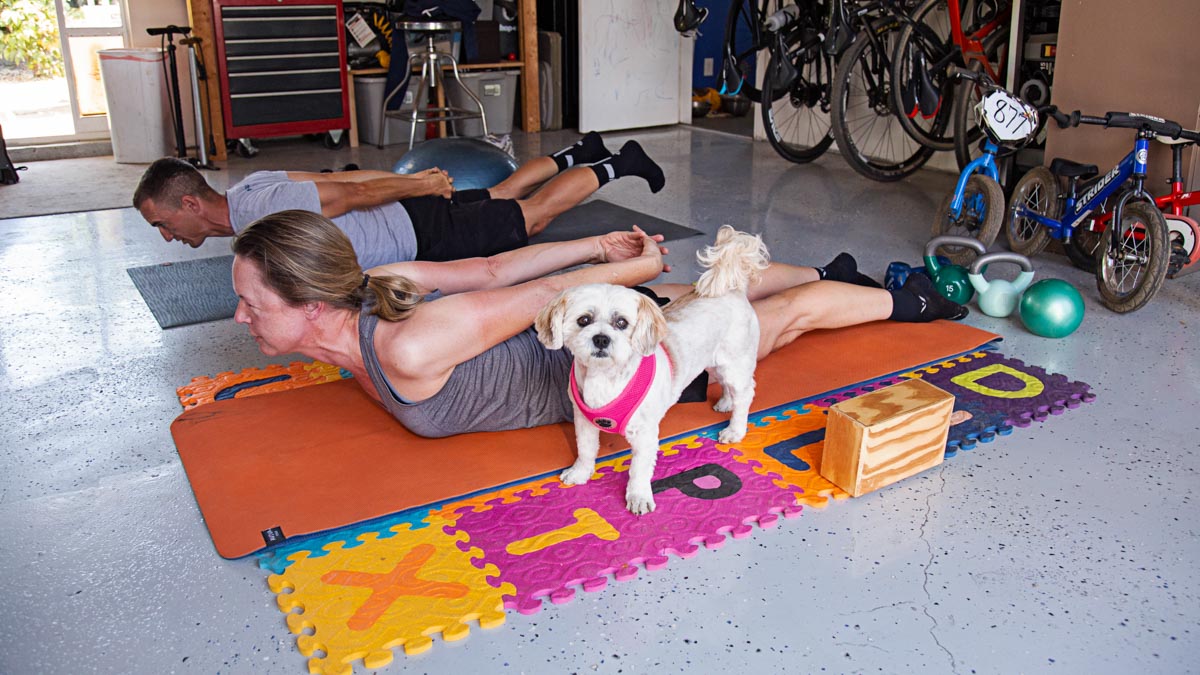Here’s a scenario to consider: say you have a busy athlete with a young family. They have a full-time job and aspire to train for a 70.3. How would you help them prioritize their training without having them dig themselves into a cumulative stress hole? This is the kind of challenge endurance coaches face all the time.
Although it may seem relatively straightforward, how you apply a training plan to an individual can vary. It ultimately should hinge on several key factors: how much training they can absorb, how much recovery they can access, how much additional stress is imposed by family/work life, and how much time they can realistically allocate to their training.
Training Load Measurement Methods
We need to first calculate the total load that the athlete can manage. Too much, the athlete can end up injured, burned out, or in conflict with their family. Too little, and we could be leaving an opportunity on the table.
Training load or training stress reflects how much physical stress the body is under. Nearly everyone who participates in physical activity measures their training load to some degree. On medical forms, there commonly are questions about your activity level per day or week. When speaking to friends, people will say that they “play tennis once per week”, or “go to the gym twice a week.”
As the person becomes more serious about training, their tracking becomes more accurate. This may be due to weight loss goals, lifestyle aims, or performance goals. They often move swiftly to a volume-based measure: “I train for 8 hours per week” or “I run 40 miles a week.” However, as many of us know, riding for one hour “easy” is very different from a 60-minute criterium. One hour of exercise is not equal!
Athletes then begin to track intensity and duration. Initially, Roger Bannister used TRIMP scores and calculated the “time” in a zone. Andrew Coggan uses TSS, the keystone of the Performance Management Chart and TrainingPeaks’ algorithms. Furthermore, there are discussions about CTL and Chronic Intensity Load questioning if TSS is good enough. Scientists are constantly striving to calculate training load accurately.
Evaluating Life Stress
Here is where it gets a little blurry. Life stress can’t be measured easily. Some of the best means are still subjective scores: mood, motivation and readiness to train/fatigue etc. Alternatively, tracking heart rate or heart rate variability (HRV) enables you to assign a real value to it. These measurements are likely to improve after a good recovery session unless life stress gets in the way.
It’s also important to remember, people respond differently to different life events. For example, for some, giving a speech may create a considerable life stress score. For others, it won’t make too much of a ripple!
Incorporating Recovery and Maintaining Balance
Performance only improves if we recover from our training. Objectively measuring recovery enables us to recognize a training/recovery gap. We can track things like sleep quality and quantity or nutrition intake. One word of caution: often these metrics put additional stress on the athlete as failing to get high-quality sleep according to a training device or watch can feel like a failure.
Often people talk about a stress bucket. Training and socializing fill your stress bucket. Recovery, rest and nutrition empty it. The idea is that you don’t want the bucket to overflow. Suppose there’s a challenging block of training coming up. You want to ensure that the athlete has a relatively empty bucket so as to execute the prescribed session. If an athlete has critical work deadlines, this may add additional stress, result in less recovery, and therefore take up more bucket space than you’d ideally prefer. The battery or bucket can’t change size!
If we take the time to gain insight into each of an athlete’s life stressors, we can begin to adjust training and strategically incorporate extra recovery. For example, whereas usually, an athlete may do a tough track session, we might need to replace that with an easy run with a ‘feet up on the couch’ recovery/working hybrid session so as to accommodate their critical work deadline.
How to Implement Balance Practically
From a coaching perspective, it is straightforward – you work with what you have. Suppose an athlete can only train eight hours a week. If you add a ninth hour of training you may end up with a physically exhausted athlete. Alternatively, if this extra hour eats into the time they spend with their family, this may result in an emotionally destabilized athlete. Strategically maximizing each training session and reducing extra “stuff” becomes essential.
Often, there are ways of increasing training time without impacting recovery or family life. One of the best methods is by looking at the athlete’s week in its entirety. Perhaps they spend two evenings out for drinks with friends, or maybe they spend two hours commuting a day. Are there ways to reduce these parts of their life in order to maximize training or family time? Perhaps they could consider riding or running to work (even from a train station). This would eliminate some of the training volume-focused sessions and enable them to focus on quality sessions. Alternatively, trips to see friends (with the family) can be managed. Perhaps friends live an hour away by car. Consider leaving earlier riding part of or all the way to their house. If you have a tolerant partner, they can drive the children there.
These sorts of solutions are often not considered by an athlete, but a little nudge from the coach can help athletes fit their training around their busy schedules and see opportunities in an otherwise jam-packed schedule.


